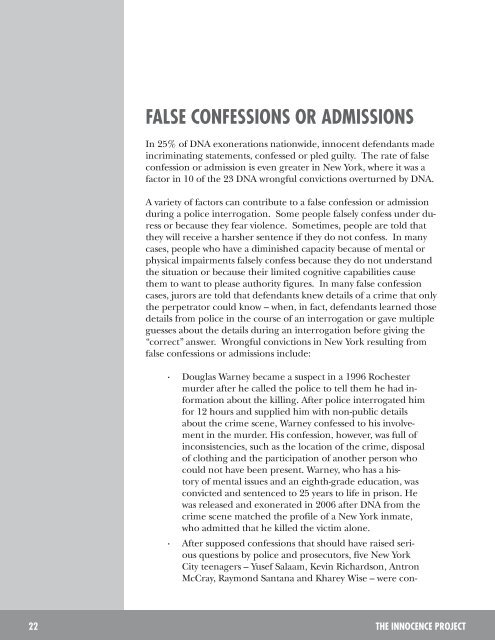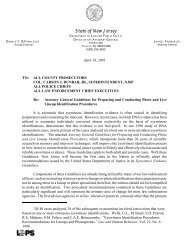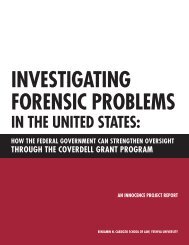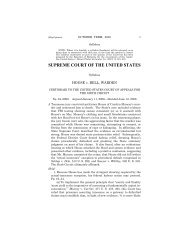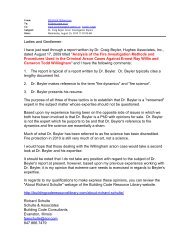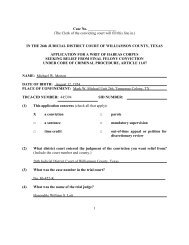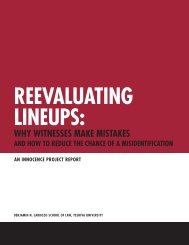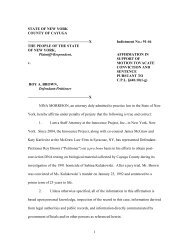Lessons Not Learned - The Innocence Project
Lessons Not Learned - The Innocence Project
Lessons Not Learned - The Innocence Project
You also want an ePaper? Increase the reach of your titles
YUMPU automatically turns print PDFs into web optimized ePapers that Google loves.
FALse ConFessIons oR ADMIssIons<br />
In 25% of DNA exonerations nationwide, innocent defendants made<br />
incriminating statements, confessed or pled guilty. <strong>The</strong> rate of false<br />
confession or admission is even greater in New York, where it was a<br />
factor in 10 of the 23 DNA wrongful convictions overturned by DNA.<br />
A variety of factors can contribute to a false confession or admission<br />
during a police interrogation. Some people falsely confess under duress<br />
or because they fear violence. Sometimes, people are told that<br />
they will receive a harsher sentence if they do not confess. In many<br />
cases, people who have a diminished capacity because of mental or<br />
physical impairments falsely confess because they do not understand<br />
the situation or because their limited cognitive capabilities cause<br />
them to want to please authority figures. In many false confession<br />
cases, jurors are told that defendants knew details of a crime that only<br />
the perpetrator could know – when, in fact, defendants learned those<br />
details from police in the course of an interrogation or gave multiple<br />
guesses about the details during an interrogation before giving the<br />
“correct” answer. Wrongful convictions in New York resulting from<br />
false confessions or admissions include:<br />
•<br />
•<br />
Douglas Warney became a suspect in a 1996 Rochester<br />
murder after he called the police to tell them he had information<br />
about the killing. After police interrogated him<br />
for 12 hours and supplied him with non-public details<br />
about the crime scene, Warney confessed to his involvement<br />
in the murder. His confession, however, was full of<br />
inconsistencies, such as the location of the crime, disposal<br />
of clothing and the participation of another person who<br />
could not have been present. Warney, who has a history<br />
of mental issues and an eighth-grade education, was<br />
convicted and sentenced to 25 years to life in prison. He<br />
was released and exonerated in 2006 after DNA from the<br />
crime scene matched the profile of a New York inmate,<br />
who admitted that he killed the victim alone.<br />
After supposed confessions that should have raised serious<br />
questions by police and prosecutors, five New York<br />
City teenagers – Yusef Salaam, Kevin Richardson, Antron<br />
McCray, Raymond Santana and Kharey Wise – were con-<br />
22 THe InnoCenCe PRoJeCT


